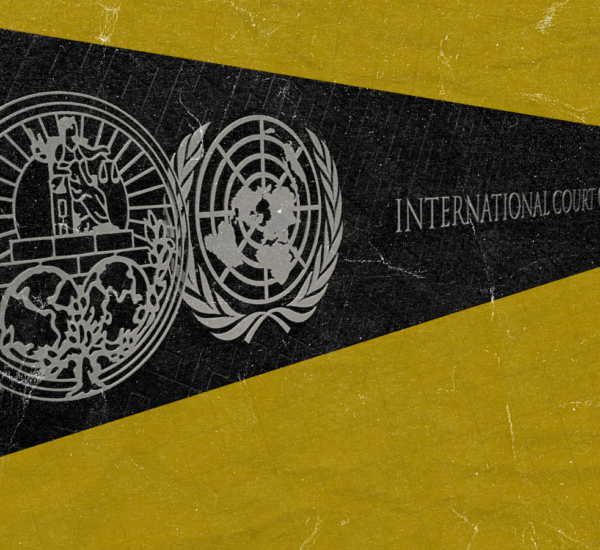This series analyses the changes proposed by the Criminal Law Bills in 2023. This article was first published as part of Project 39A’s Bharatiya Nyaya Sanhita Bill, 2023: A Substantive Analysis, a complete version of which can be accessed here.
This post analyses the new provision prescribing punishment for ‘terrorist acts’, in light of the existing law and definitions in the UAPA.
Through Cl. 111, the offence of ‘terrorist act’ has been introduced in the BNS. Where the act results in the death of any person, it is punishable with death or life imprisonment without parole; otherwise, it is punishable with imprisonment which may range from five years to life. Alongside, a slew of related offences have also been introduced in the same clause. It may be noted that presently, offences relating to terrorism are dealt with under the UAPA[1]. In this regard, i.e. providing a law for prosecution of terror offences, the UAPA is a descendant of the repealed laws – the TADA[2] and the POTA.[3] Terrorism was introduced into the UAPA through an amendment in 2004, right after the repeal of the POTA.
The UAPA (and the erstwhile TADA and POTA) is a special legislation. Special legislations are purportedly created to address special situations by enacting a new legal structure. In criminal law,[4] a special legislation creates new offences and further provides special investigative and adjudicatory procedures to be followed in the prosecution of offences defined thereunder.[5] The provisions of the CrPC, to the extent they are inconsistent with the special provisions of the UAPA, are inapplicable to prosecutions under the statute.[6]
I. Terrorist act and intent – expansion
Under terror laws, ordinary crimes are recast as a ‘terrorist act’ if they are committed with a specific intent.[7] A similar structure has been retained in Cl. 111, where a variety of acts are recast as terrorist acts, but the qualifying special intent has been modified. While under the UAPA, the intent must be to ‘threaten… the unity, security, economic security or sovereignty of India or with intent to strike terror’; in Cl. 111, the intent must be to ‘threaten the unity, integrity and security of India, to intimidate the general public… or to disturb public order’. Thus, a different, and lower, threshold of ‘intimidation of public’ or ‘disturbance of public order’. This is a significant departure from the intent to strike terror conceptualised and criminalised under the UAPA.
Striking terror has been interpreted in case laws under the POTA,[8] to elevate it beyond ‘mere criminality’ or a ‘law and order’ problem.[9] Intimidation generally refers to any threats to a person’s life, property, etc. under the IPC;[10] whereas, under the TADA, it is only intimidation of a public which is used to acquire or maintain power that reaches the level of ‘terrorism’.[11] Thus, without explanations or qualifiers in Cl. 111, intimidation of the public (or a segment thereof) appears to be a lower and more ambiguous threshold for characterising an act as a ‘terrorist act’. Ambiguity in penal provisions, leading to overbroad application of laws, is a recognised ground for striking them down as unconstitutional.[12] Clarity, judicial or otherwise, would be of utmost necessity for this provision to operate restrictively and constitutionally.
Although the acts covered under the provision largely mirror s. 15(1) of the UAPA, a few notable changes have been introduced in Cl. 111. Destruction of public facilities or private property is criminalised, whereas under the UAPA, only destruction of property used by the Government is within the scope of terror acts. The concern of overbroad application of the provision, when combined with a vaguely worded intent, may be reiterated. Additionally, acts which cause ‘extensive interference with, damage or destruction to critical infrastructure’ have also been recognised under this clause. This is in recognition of the evolving reality of transnational terrorism;[13] interference with critical infrastructure, which are often vulnerable to cyber attacks, have become the modus operandi in transnational terror cases.
In this regard, although there is no globally accepted definition of which infrastructure is ‘critical’ to the nation, a few identifying marks are: it includes physical infrastructures (such as power plants, hospitals), as well as a virtual infrastructure allowing the physical components to operate; and generally, interference with or destruction of it would have a detrimental impact on the provision of essential services necessary for the social or economic well-being of the country, or its security.[14] It may be noted that deliberately causing damage to a petroleum or gas pipeline, with the intent to sabotage or with the knowledge is currently already criminalised.[15] It is unclear whether infrastructure such as roadways will fall within the ambit of ‘critical infrastructure’ and therefore potentially implicate acts which are frequently used for protests.
Finally, acts which ‘destabilise or destroy the political, economic, or social structures of the country, or create a public emergency or undermine public safety’ have also been included in the provision. The legislative intent of adding ‘social structures’, or its ambit, is unclear, and creates serious potential for abuse.
The punishment for a terrorist act if it results in death may range from life imprisonment without parole to death. This is a legislative innovation currently unseen in the IPC, where parole[16] (a power reserved for the executive to allow temporary release of prisoners) has been legislatively restricted. Mandatory restriction of parole by the legislature not only raises questions on separation of powers; but also has implications for the policy of reformation which underlies the criminal justice system.[17] By entirely withholding this opportunity, the BNS may prevent this ideal from benefiting prisoners convicted of terrorism and militate against the stated objective of the criminal justice system.
II. Other offences relating to terrorism
Beyond this, the sub-clauses to Cl. 111 also criminalise conspiracy, abetment, and preparation for terrorist acts (punishable with imprisonment which may range from five years to life imprisonment); membership of a terrorist organisation (punishable with imprisonment which may extend for life); and harbouring and/or concealment of a person who has committed a terrorist act (punishable with imprisonment which may range from three years to life). These provisions substantially mirror provisions in the UAPA, including the punishments prescribed for said offences.
An expansive offence of ‘holding proceeds of terrorism’ has been introduced through Cl. 111 (6) whereby holding ‘any property, directly or indirectly, derived or obtained from commission of terrorist act or proceeds of terrorism’ is a criminal offence. This is a lower threshold in comparison to the UAPA, as this clause does not have a requirement of ‘knowingly’ holding property derived from proceeds of terrorism. Simultaneously, holding even ‘indirectly’ derived property has been criminalised. The implications of this could be severe, as unknowingly holding property which may have at any, but not proximate, point been bought with proceeds of crime, is criminalised. An identical phrase is found in the PMLA[18], whereunder the Supreme Court accorded a similarly expansive definition to the phrase.[19] However, under the PMLA, the consequences are less serious, as holding proceeds of crime merely leads to attachment of the property; whereas, Cl. 111 creates a new offence punishable with imprisonment. The holding of proceeds under this clause without the express requirement of ‘knowingly’ or ‘purposely’ doing so also makes the offence closer in colour to issues of strict liability. While the PMLA takes a similar approach, the criminal liability and consequences imposed by the BNS under this clause is a serious cause for concern with respect to the mens rea requirement and its implications.
III. Terrorist organisation
Explanation (c) to Cl. 111(6) defines ‘terrorist organisation’, which includes any organisation which may have been notified as a terrorist organisation by the Government under the UAPA. However, the clause goes beyond the UAPA to include any entity controlled by any terrorist that commits, participates, contributes etc. to an act of terrorism; or is ‘otherwise involved in terrorism’. Though the UAPA uses the term ‘terrorism’ extensively, it hasn’t been defined. Identifying this lacuna, the official statement accompanying the BNS stated that terrorism has now been defined under this Bill.[20] However, similar to the UAPA, the clause defines a terrorist act, but not terrorism.
As organisations may be deemed to be ‘terrorist’ based on ‘involvement in terrorism’, the lack of definition raises additional issues of ambiguity in law. It also raises the question of which acts amount to terrorism, above and beyond what has already been defined as a terrorist act. Consequently, determination of which organisation is a ‘terrorist’ organisation is left entirely and without sufficient guidance in the hands of any police officer under this scheme. Simultaneously, the new definition of ‘terrorist acts’ creates the possibility of significantly lower of thresholds for organisations to be deemed ‘terrorists’.
Contrast the expansive scope of the provision with the regime under the UAPA, where the Central Government has the sole discretion to notify, through public announcement, organisations which are deemed to be ‘terrorist’.[21] It also provides procedures for denotification of terrorist organisations and review mechanisms.[22] Cl. 111 does not provide for those mechanisms and in their absence, an organisation may be deemed to be ‘terrorist’ in perpetuity at the instance of a police officer. Simultaneously, all members (who may not be aware that the organisation is now a ‘terrorist organisation’ or has committed ‘terrorist acts’) may be liable for a serious offence which is punishable with life imprisonment.
IV. Person designated as ‘terrorist’
A final addition to the clause is the definition of a ‘terrorist’ provided in Explanation (a). It covers persons who participate in or commit (or attempt or conspire to commit) a terrorist act; and any person who ‘develops, manufactures, possesses, acquires, transports, supplies, or uses weapons, explosives, or releases nuclear, radiological or other dangerous substance, or causes fire, floods or explosion’. This latter provision is concerning to the extent that it does not require any intention (such as to threaten unity, to intimidate the general public, or even to strike terror). Therefore, a literal reading would imply that a person could be a ‘terrorist’ for even accidentally causing a fire. Though seemingly absurd, the example serves to illustrate the extent to which power and authority may be abused through this provision.
Being a terrorist, however, has no direct consequences under the clause, as it does not penalise being a terrorist. However, the person may not even be informed that they are being designated as a ‘terrorist’, as neither the clause nor the BNSS necessitate notifying said person. This must, however, be juxtaposed with the definition of a ‘terrorist organisation’, which refers to an entity controlled by a terrorist, which ‘is otherwise involved in terrorism’. In the absence of any public notification designating a person as a ‘terrorist’, as well as the aforementioned lack of definition for ‘terrorism’, it yet again creates the potentiality for abuse of the provision.
The UAPA was similarly amended in 2019, to classify persons as ‘terrorists’ without any legal consequences of being a ‘terrorist’.[23] However, the said amendment reserves this power only to the government, rather than any officer,[24] and requires public notification. It was strongly opposed in Parliament, for the social consequences it may lead to for a person deemed to be terrorist in the absence of legal procedure (and accompanying due process and fair trial).[25] Similar concerns arise with this Explanation. The UAPA amendment has also been challenged in the Supreme Court, for it allows persons to be designated as terrorists without being heard or judicial scrutiny, and acts as an indirect restriction on the exercise of fundamental rights.[26]
Admittedly, a point of distinction remains that the power vested in the government under the UAPA to notify individuals as terrorists is unfettered insofar as the provision provides no guidance as to who can be classified as a terrorist, which has not been replicated in the BNS. Another caveat may be flagged – Cl. 111 does not provide for the public notification of a person designated as terrorist, its potential for causing social exclusion and harm to the person may not be identical to the UAPA provision.
V. Absence of safeguards
Procedural safeguards provided in the UAPA, have not been reflected in the BNSS for a terrorist act. These include: (a) only senior police officers[27] being allowed to investigate a terrorist act; and (b) mandatory sanction to be obtained from the Central or state Government, based on a review of the evidence, before cognizance can be taken of a terrorist offence. These safeguards play an important role in checking abuse of power, testified to by their long history in the TADA and the POTA as well.[28] In 2018, the sanctioning process was turned into a 2-step process precisely to filter out cases where evidence did not warrant prosecution, particularly in view of the ambiguity in the definition of the offence.
These safeguards are also necessitated due to the deviation of the UAPA from the CrPC in that the UAPA severely restricts rights of the accused and enlarges State powers in respect of bail, police custody, and attachment of property. Accused persons under Cl. 111 may continue to benefit from the provisions on bail and attachment in the BNSS, as it does not provide for terror-specific exceptions. However, it is unlikely that the UAPA will not be invoked alongside these provisions and it is likely that the terror-specific exceptions on issues like bail will operate through that. More concerningly, the absence of the above-mentioned safeguards becomes alarming in view of the vagueness which permeates Cl. 111, as discussed above, and the serious consequences attached to being labelled as a terrorist or tried for a terrorist offence.
It may be noted that the constitutional validity of the UAPA (as well as the UAPA amendment highlighted early) is currently under consideration by the Supreme Court,[29] on a variety of issues including and beyond the concept of terrorism, such as denial of anticipatory bail and power to declare an association ‘unlawful’. The legal community and the legislature may have to assess its impact on Cl. 111 in view of the similarities between Cl. 111 and the UAPA.
[1] Unlawful Activities (Prevention) Act, 1967.
[2] Terrorist and Disruptive Activities (Prevention) Act, 1987.
[3] Prevention of Terrorism Act, 2002.
[4] S. 41, IPC: ‘A “special law” is a law applicable to a particular subject’.
[5] Kunal Ambasta, Designed for Abuse: Special Criminal Laws and Rights of the Accused, Nalsar Law Review, Volume XIV, Issue 1, 2020, pg. 3.
[8] PUCL v. Union (2004) 9 SCC 540; Mohd. Khalid v. State of West Bengal (2002) 7 SCC 334, paras 42, 46: “’Terrorism’ has not been defined under TADA nor is it possible to give a precise definition of ‘terrorism’ or lay down what constitutes ‘terrorism’. It may be possible to describe it as use of violence when its most important result is not merely the physical and mental damage of the victim but the prolonged psychological effect it produces or has the potential or producing on the society as a whole.”
[9] PUCL v. Union (2004) 9 SCC 540, para 584.
[10] S. 503, IPC.
[11] Hitendra Vishnu Thakur v. State of Maharashtra (1994) 4 SCC 602, para 7; Black’s Law Dictionary, cited in Yakub Memon v. State of Maharashtra (2013) 12 SCC 1, para 809, defining terrorism as “the use of threat or violence to intimidate or cause panic, esp. as a means of affecting political conduct” (8th edition, pg. 1512).
[12] Shreya Singhal v. Union of India (2015) 5 SCC 1; John F. Decker, Addressing Vagueness, Ambiguity, and Other Uncertainty in American Criminal Laws, Denver Law Review, Volume 80, Issue 2, 2002.
[13] David Fidler, Whither the Web?, Georgetown Journal of International Affairs, Volume 16, Issue 8, 2015 Special Issue.
[14] Samuli Hataaja, Cyber operations against Critical Infrastructure under norms of responsible state behaviour and international law, International Journal of Law and Information Technology, Volume 30, Issue 4, 2022, pg. 1423.
[15] S. 15(4) of the Petroleum and Minerals Pipelines (Acquisition of Right of User in Land) Act, 1962: Deliberately causing damage to a petroleum or gas pipeline, with the intent to sabotage or with the knowledge it will result in death, is punishable with rigorous imprisonment of ten years to life, or with death.
[16] Under Indian law, parole is the conditional temporary release of a prisoner, generally under supervision of a parole officer, who has served part of the term for which he was sentenced to prison on grounds which may be special (such as the death of a family member) or general (such as need for farming land, construction of home, etc). The ultimate decision-making authority on parole differs from state to state, and may be either the District Magistrate and the State Government.
[17] Press Release accompanying the Model Prisons Act, 2023 (not a legislation), proposed by the MHA, which specifically mentions that prisons are not to be seen as places of retributive deterrence, but as “reformative and correctional institutions where the prisoners are transformed and rehabilitated back into society as law abiding citizens”.
[18] Prevention of Money Laundering Act, 2002.
[19] Vijay Madanlal Chaudhary v. Union of India 2022 SCC OnLine SC 929.
[20] Press Release, MHA, accompanying the introduction of the Bill in Lok Sabha, last accessed 30.08.2023.
[23] Unlawful Activities (Prevention) Amendment Act, 2019.
[24] Unlawful Activities (Prevention) Amendment Act, 2019, s. 35(1)(a): ‘The Central Government may, by notification, in the Official Gazette, – add an organisation to the First Schedule or the name of an individual in the Fourth Schedule’.
[25] Lok Sabha Debates (24.07.2019), pg. 113, <https://eparlib.nic.in/bitstream/123456789/786392/1/lsd_17_01_24-07-2019.pdf>.
[26] Supreme Court Observer, ‘Constitutionality of UAPA Amendment’, last accessed 30.08.2023.
[27] These include the Assistant Commissioner of Police or Deputy Superintendent of Police.
[28] S. 20-A(2), TADA: ‘No court shall take cognizance of any offence under this Act without the previous sanction of the Inspector-General of Police, or as the case may be, the Commissioner of Police.’; s. 50, POTA: ‘No court shall take cognizance of any offence under this Act without the previous sanction of the Central Government or, as the case may be, the State Government’. S. 51, POTA: ‘Officer competent to investigate offences under this Act’.
[29] Writ petition filed in Biyumma v. Union of India (2018), <https://www.livelaw.in/pdf_upload/pdf_upload-371029.pdf>, last accessed 30.08.2023.





